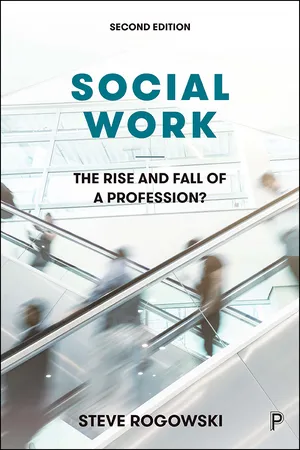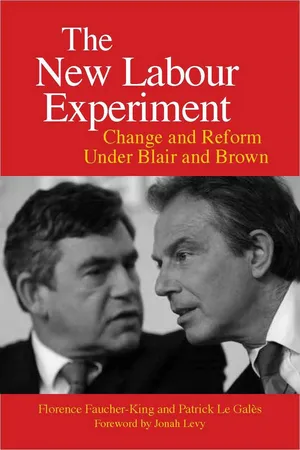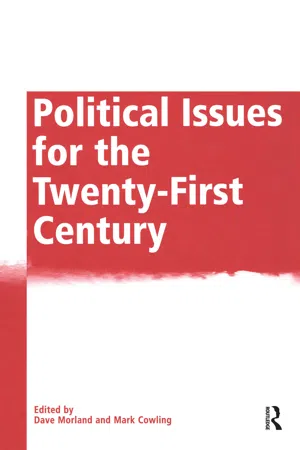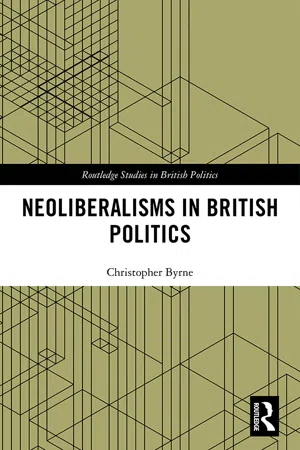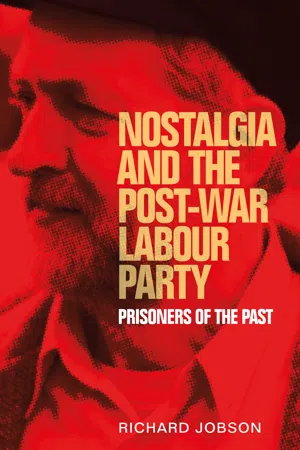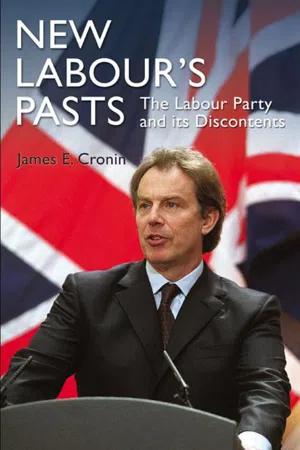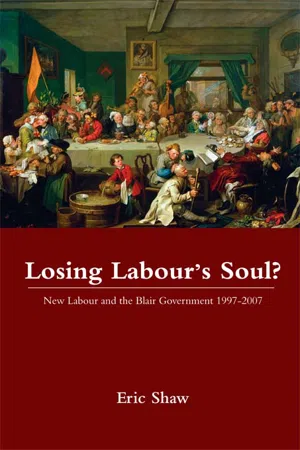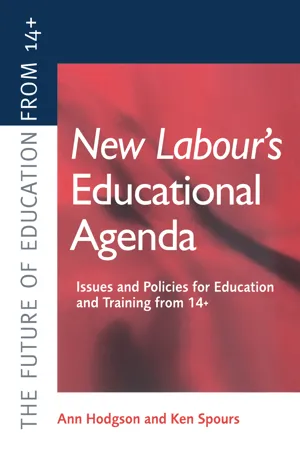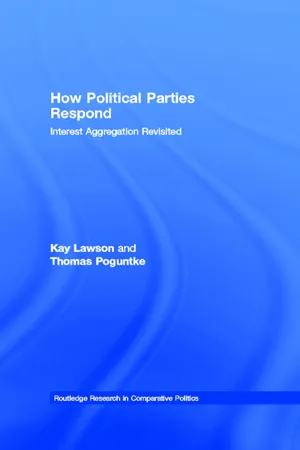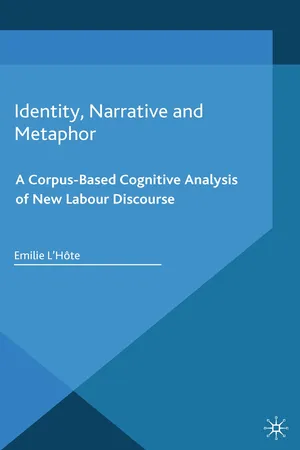History
New Labour
New Labour refers to the rebranding and modernization of the British Labour Party in the mid-1990s under the leadership of Tony Blair. It aimed to move the party away from its traditional socialist roots towards a more centrist, business-friendly position. New Labour's policies included a focus on economic growth, social justice, and public service reform, and it sought to appeal to a broader electorate.
Written by Perlego with AI-assistance
Related key terms
Related key terms
1 of 4
Related key terms
1 of 3
10 Key excerpts on "New Labour"
- eBook - ePub
Social Work
The Rise and Fall of a Profession?
- Steve Rogowski(Author)
- 2020(Publication Date)
- Policy Press(Publisher)
From the position of acceptance to globalisation as an uncontrollable phenomenon … New Labour consolidated the Conservatives’ reforms and pushed beyond them, ensuring that public services, such as social work, were drawn deeper into managerial, market-orientated ways of thinking and practising. As in many other countries, what began as a national project under neoconservative governments became generalised as part of the economic agenda of globalisation. (Harris and White, 2009a, p 3)The landslide general election victory of Tony Blair in 1997 saw John Major ousted as a government of sleaze and corruption. After many years in opposition, the ‘old’ social democratic, to some even socialist, Labour Party had been rebranded by Blair, Gordon Brown and a few others into New Labour. They had argued that any suggestion of socialism was unlikely to appeal to the new middle classes so a new direction for the party was needed. Despite the electorate’s calls for change, there was no major transformation in terms of political ideology, economic and social policy.Although New Labour espoused the Third Way, when in power it continued with the neoliberal offensive of the Thatcher and Major governments. Its 1997 general election manifesto stated that policies could not be based on those of 1947 or 1967 (Labour Party, 1997) and, as with Thatcher, there was a repudiation of the social democratic compact. Blair and his guru Giddens (for example, 1994, 1998) argued for the Third Way which did not conform to the ‘old’ left or right wing of politics. In essence, however, New Labour’s ‘new’ ideology involved the embracement of free-market globalisation, with flexible labour markets and flexible workers being the order of the day with the aim of producing a competitive economy that relies on a competitive society in the global economy (Mooney and Law, 2007). While the social democratic era was based on the corporatism of government, labour and business making and implementing policy, under the neoliberalism of New Labour, government largely operated at the behest of multi-national corporations; witness the oft repeated reference to the need for light or soft touch regulation so as not to stifle competitiveness and profitability. - eBook - ePub
The New Labour Experiment
Change and Reform Under Blair and Brown
- Florence Faucher-King, Patrick Le Galés, Gregory Elliott(Authors)
- 2010(Publication Date)
- Stanford University Press(Publisher)
4 The Reinvention of the Labour Party: “New Labour, New Britain” Parties that do not change die, and this party is a living movement not a historical monument. —Tony Blair, Labour Party Conference, 1994 In 1992 Neil Kinnock narrowly lost to Margaret Thatcher’s successor, John Major. This fourth defeat (following Labour’s electoral disasters in 1983 and 1987) led observers to wonder whether Conservative domination might be interminable (Jowell et al., 1994; Heath et al., 2001). During the 1980s, an internal debate on the left of the party had opposed modernizers to those who awaited the collapse of the Thatcher governments. The former made a significant contribution to a renewal of analyses of power, multiculturalism, and capitalism. Having understood the extent to which Thatcherite strategy was a response to the transformation of the British economy and globalization, they sought to develop a Labour response to “New Times.” 1 For them, returning to the past was no longer an option. The premature death of the leader John Smith in 1994 made possible the rapid emergence of young leaders. When Tony Blair was elected leader of the Labour Party in 1994, the activists were ready to accept unprecedented political changes in order to win back power. The young leader exploited this inner-party atmosphere to embark at once upon a program of “modernization” of the party that involved a host of measures, ranging from the symbolic (rewriting clause 4 of the constitution, 2 and accepting the market model), to the mediatic (adoption of a new name: New Labour), the political (a promise to observe the constraints of the Conservative budget and not raise taxes), and the organizational (reform of discussion procedures and centralization of membership services). Tony Blair, Gordon Brown, and their teams had one idea in mind: to prepare for the return to power and a medium-term strategy for government - eBook - ePub
- Mark Cowling, Dave Morland(Authors)
- 2017(Publication Date)
- Routledge(Publisher)
There is certainly no ‘end of ideology’, despite the changes internationally with the end of Stalinism, collapse of neo-liberal conservativism and globalisation. While New Labour attacks the Tories as being an ideological party led by dogma and claims itself to be beyond Left and Right (Labour Party, 1997, p. 19), the Labour Party still has a belief system behind it (Wright, 1999, pp. 193-201). The communitarianism embraced is a break with neo-liberal conservatism and is a reassertion of Christian socialism. This is a departure also from ‘statist’ social democracy; however, it is more interventionist than Thatcherism (Driver and Martell, 1998, p. 181). New Labour’s project is cleverly designed, taking account of socio-economic change and political realities. Labour has reformed old social democracy and has accommodated itself to the changes in politics of the past thirty years. However, New Labour is a distinct reaction against Thatcherism. Driver and Martell (1998, p. 184) believe that New Labour combines Left and Right rather than transcending them, concluding thatwhile pragmatic, it is not just that: it is driven also by ideological belief. It is defined by, but departs from, Thatcherism - moved to the Right but with anti-Thatcherite emphasis. New Labour’s politics are defined both by Right and by Leftwards inclinations which are beyond old Left. These are the politics of post-Thacherism.In the 2001 election campaign Blair again asserted the need to move beyond Thatcherism and a ‘clean break with the politics of the 1980s’ and juxtaposed Thatcherism’s ‘no such thing as society’ with Labour’s communitarian paradigm (Blair, Moving Beyond Thatcherism speech, South Yardley, Birmingham, 5 June 2001). Thatcherism did change the language of consensus to a reciprocal relationship of consumers and deserving poor. New Labour’s Third Way Christian socialism and pragmatic approach in achieving its objectives is a different language, one that does strive to be consensual and inclusive. While morally prescriptive, New Labour’s initiatives for the unemployed and dependent communities and its holistic approach are fundamentally different from the past, both Thatcherism and old Labour, though inspired by its past.The Future of Ideological Politics in the UK
Ideologies will play a part in politics, as Blair said, ‘politics is first and foremost about ideas’ (Blair, 1998, p. 1), but the way this will happen will be different. This will be a post-industrial politics wherein government is broadly ‘liberal’, as Bell postulated (Bell, 1974, p. 164). The socio-political changes of the last thirty years and eighteen wasted Tory years have had a significant impact on society, vast tracts of it impoverished and endemically fractured. Many of the past changes, while not irreversible, will take time and political dexterity to resolve. Consequently, New Labour’s policies, particularly on welfare and public policy will still have ideological underpinnings that are distinct from the Tory years. - eBook - ePub
- Christopher Byrne(Author)
- 2018(Publication Date)
- Routledge(Publisher)
and the fact that the Labour Party under Blair was both cognisant of this accelerated pace of social change and able to keep up with it, implying as it did a fundamental demarcation ‘between the party’s past and present practice, advertising a caesura in the historical continuity of the party’s evolution’ (Randall, 2009: 190).Fair is efficient: New Labour and the logic of difference
The accounts of New Labour put forward by Dyrberg and Randall overlap to a large extent with the account put forward by Mouffe (2005). According to Mouffe, New Labour presented its Third Way as a ‘radical centre’ that transcended the left/right ideological divide by arguing that, due to changes in the class structure of advanced industrial societies, ‘the majority of people belong to the middle classes [apart from] a small elite of very rich on one side, and those who are “excluded” on the other’ (Mouffe, 2005: 122). In this relation, John Prescott’s famous assertion that ‘We’re all middle class now’ is a paradigmatic example of the manner in which New Labour sought to go beyond left and right as an organising metaphor, but it is not the only indicator of what the party’s intentions were in regard to the reorientation of mainstream political discourse. One of the defining features of the New Labour project was the attempt to reconcile with one another themes and ideas which were previously (that is, prior to Blair’s emergence as leader of the party) seen to be incompatible. That is, New Labour sought to expand a logic of difference on the terrain of British politics.This was manifested in a wide range of policy changes and in a diverse array of ideological transformations. Within New Labour’s world-view, there no longer existed any antagonism between low taxes and high-quality public services. In fact, the latter presupposed the former because low taxes were crucial in building the ‘economic dynamism’ that could deliver a higher overall tax take for the government, and because in a context of internationally mobile capital, higher rates of tax are an invitation for corporations to look elsewhere to do business (Blair and Schroeder, 1999). In a similar vein, there was no longer seen to be any antagonism between, on the one hand, the existence of free markets and economic dynamism and, on the other, social justice, given that New Labour was proposing a ‘Third Way in which government works in partnership with business to boost enterprise, education and employability’ (Blair, 1998). From this perspective, notions of social justice as encompassing fundamental beliefs in equality and solidarity are almost entirely alien, and social justice is instead understood in terms of equipping people with the skills necessary in order to be a functional part of the new global economy. In other words, government’s role in relation to securing social justice became limited to ensuring that citizens do not suffer the injustice of being excluded from the labour market. Likewise, any antagonism between a prosperous free-market economy and the existence of the welfare state ceased to exist in the eyes of New Labour, thanks to the notion of ‘welfare to work’, which envisioned a continuing role for the welfare state as guarantor of ‘opportunity and security in a changing world’, and something which could play a part in boosting the ‘employability’ of those in receipt of unemployment benefits (Blair, 1994). - eBook - ePub
Nostalgia and the post-war Labour Party
Prisoners of the past
- Richard Jobson(Author)
- 2018(Publication Date)
- Manchester University Press(Publisher)
5 The New Labour era, 1992–2010New Labour emphasised the nostalgic and backward-looking dimensions of Old Labour and, up until this point, the analysis presented has centred on an assessment of the validity of these claims. This chapter will move on to assess New Labour’s relationship with the same type of nostalgia that it believed had previously limited the party’s political progression. As highlighted in this book’s introduction, the idea that New Labour actively distanced itself from the past has been put forward by both historians and political scientists. James Cronin has argued that the ‘rejection of the past was … central to New Labour’s emerging identity.’1 Similarly, studies that have suggested that Blairism represented an ideological accommodation of Thatcherism have tended to imply that New Labour was historically rootless.2Nevertheless, the notion that New Labour was an ahistorical entity that was uniformly hostile to the past has been contested. Nick Randall has argued that New Labour mobilised selective memories in an attempt to separate the party from its past.3 Furthermore, Richard Toye has stated that ‘The charge that the key figures in New Labour are ignorant of their own party’s history is quite wrong.’ Instead, Toye has suggested that Tony Blair’s ‘view of history’ stemmed from the idea of a ‘lost’ historical progressive alliance between social democrats and liberals that was presented by David Marquand in The Progressive Dilemma in 1991.4 More recently, Emily Robinson has also challenged the perception that New Labour had no use for history. Robinson has provided evidence that has shown that Blair’s historical interest in New Liberalism predated Marquand’s book.5 She has outlined the way in which, during their successful attempt to reform Clause IV in 1995, members of the New Labour project gained a strategic advantage by framing their political opponents as nostalgic whilst, simultaneously, portraying themselves as heirs to a longer-term historical ‘progressive consensus’.6 - eBook - ePub
New Labour's Pasts
The Labour Party and Its Discontents
- James E. Cronin(Author)
- 2016(Publication Date)
- Routledge(Publisher)
But to what end? That is the issue on which New Labour's critics have focused most intently, though the precise complaint had been typically muddled. For some New Labour has simply lost sight of its roots, abandoned socialism, reconciled itself to the domination of capital and become virtually identical with Thatcherism. The implication is that New Labour represents merely capitulation. In fact, New Labour's rapprochement with capital was based on a clear belief that markets might be flawed, but worked; and the rejection of socialism, however defined, was a choice made in the face of a long record of socialist failure. The decision to accept the broad outlines of what Thatcher had wrought was likewise not just a reluctant concession to what was politically feasible but a recognition that much of what the Conservatives had said and done in the 1980s was effective and in some sense appropriate. So New Labour had not forgotten its traditions: rather, it had consciously and explicitly rejected those traditions and the policies to which they were attached.A more serious criticism was that New Labour, having effectively freed itself from the past and the old objectives of the Labour Party, had not put in place a big idea that could unite the party, inspire voters and guide policy-making into the future. As David Marquand argued, 'In place of an ideology New Labour has a rhetoric – an ahistorical (not to say anti-historical) rhetoric of youth, novelty and a curiously abstract Future.'49 To Marquand and many others that was not enough. But it was not for lacking of trying. On the contrary, New Labour's leaders and intellectual allies repeatedly lamented the absence of a positive vision of the future and demanded a sustained effort to create 'a hegemonic project' around a dominating theme. As Tony Wright argued in early 1994, 'Labour needs a project... a larger framework of ideas'.50For a time the concept that aroused most interest and seemed to offer the greatest promise was 'community'. Brown and Blair had stressed the importance of community and solidarity in order to distinguish Labour's rather modest proposals for a supply-side socialism from Thatcher's transparent disregard for community and society.51 Brown argued forcefully for the grounding of political morality in a sense of community; and he would assert that 'the most distinctive feature of British socialism historically has been its insistence on the moral basis of politics'.52 That rather strong claim was put forward in the introduction to an anthology of texts on socialism that he helped to put together and published in 1995. The book was quite long and it contained selections from Robert Burns, Shelley, Thomas More, Matthew Arnold, Keynes, Crosland, Kinnock and many more. But it included no Marxists: there was no Marx, despite those long hours in the British Museum; no Engels, despite The Condition of the Working Class in England; - eBook - ePub
Losing Labour's Soul?
New Labour and the Blair Government 1997-2007
- Eric Shaw(Author)
- 2012(Publication Date)
- Routledge(Publisher)
Hyman, 2005 : 53). The transition of ‘Old Labour’ to New Labour symbolised, publicised and registered the party's ‘paradigm shift’.For New Labour (Blair, Brown and their followers) ‘Old Labour’ was a spent force irretrievably bound to a stockpile of ill-conceived, irrelevant, dogma-driven and damaging policies. Attempts to propitiate union power by seeking its co-operation in moderating wage growth through various types of ‘social contracts’ had merely stoked-up inflationary pressures. Nationalised industries, excessive state intervention and the propping-up of lame-ducks' had reduced productivity growth, pushed-up costs and squandered resources into non-productive outlets. Deficit financing had undermined financial and business confidence, destablised the economy and provoked repeated financial crises. New Labour, Blair declared ‘has learned from the lessons of the Seventies and Eighties that Keynesian-style expansionary measures to raise the demand for labour only generated inflationary spirals, which through a squeeze on profits and investment, destroyed jobs’ (the Daily Telegraph, 17 September 1996). Second-guessing the market had distorted price signals and misused investment opportunities. Reckless and profligate policies had heedlessly alienated the financial markets. The resulting total lack of market credibility had imposed a huge burden of servicing alarmingly high public debt levels, caused turmoil on the currency and bond markets, and driven up interest rates to economically stiffing levels – culminating in the humiliating IMF-enforced cuts in public spending. But the real denouement of the ‘Old Labour’ government was the ‘Winter of Discontent’ of 1978/9. For Blair, ‘the effect of the Winter of Discontent, the piles of rubbish, the dead not buried, the economic incompetence, the high taxes, the unilateral disarmament policy, was to poison the electoral bloodstream’ (Hyman, 2005 - eBook - ePub
- Ann Hodgson(Author)
- 2013(Publication Date)
- Routledge(Publisher)
This was not only due to the way that both Neil Kinnock and John Smith modernized the Labour Party to make it more electable, but was also the result of an emerging professional consensus in the area. By the early 1990s, the Labour Party was turning outwards and making more use of specialist advice from a range of sources and not just political and trade union groups (McCaig, 1997). This keyed Labour into a growing professional consensus on the need for both the unification of the qualifications system and for a more individualist and consumer-oriented approach to learning and achievement. Opening Doors (Labour Party, 1992a), with its stress on a unified qualifications system, access, partnership and empowering individuals in a learning society was a forerunner of New Labour's approach which was to emerge more fully following Tony Blair's election as Labour leader. The Left, however, saw this document as a revisiting of 'the Wilsonian rhetoric of the "white-hot heat of the technological revolution" recycled in post-Fordist terms' (Hatcher, 1994). Period 5 (1993—96): The emergence of New Labour's new agenda The three years prior to the 1997 general election saw a wave of innovation in New Labour's educational thinking revolving around the political relationship of Blair, Brown, Harman and Blunkett. This period could rightly be termed the emergence of New Labour's new agenda for education and training. The Labour Party published a range of policy documents on post-compulsory education and training including University for Industry (1994), Labour's New Deal for Britain's under 25s (1995b), A New Economic Future for Britain (1995a), Lifelong Learning (1996a), Aiming Higher (1996b), Equipping Young People for the Future: From welfare to education (1996c) and Learn as You Earn: Labour's plans for a skills revolution (1996d), which outlined Labour's macro-economic approach. These documents provided the framework of thinking which Labour carried into government in 1997 - eBook - ePub
- Kay Lawson, Thomas Poguntke(Authors)
- 2004(Publication Date)
- Routledge(Publisher)
The apparently ‘historic’ nature of New Labour’s achievement would seem then virtually to cry out for an essentially historical explanation. Its very scale and the extent to which it seems to represent a dramatic break with the past require an analysis that places the events of 1997 in a longterm perspective and that asks questions about the evolution of both the system of representation and the society whose members seek to have their voices heard, their interests articulated and served. Situating recent developments in a longer time-frame should make it possible to determine just how new and important New Labour is and how much its emergence represents a genuine innovation (Cronin 2004). Assessing its novelty in historical terms will assist as well in determining just how it came about, and in deciding whether the phenomenon of New Labour is better understood as a brilliant but passing improvisation or a signal of deeper transformations in British society and in the nation’s political system. Two broad questions will be addressed in this essay. First, what does ‘New Labour’ stand for? To what extent are its message and political orientation different from that of the old Labour Party from which it evolved? Second, what does this mean about the changing character of its relationships with constituents – with voters, members, supporters (identifiers) and organized interests? By answering these questions about message and constituency it should be possible to offer a more informed judgement about whether Labour has gained for itself the freedom to become a fundamentally different type of party with a truly innovative outlook and a broader appeal than the old Labour Party it has replaced. By addressing issues of change and transformation it should also be possible to illuminate how institutional structures mediate between parties and voters, how they delay, deflect and ultimately shape how parties respond to changes in their environment.What ‘New Labour’ stands forPut simply and starkly, Labour – the historic party of the left – no longer occupies the left pole in the British political spectrum. A recent analysis of party programmes, for example, demonstrates that Labour’s positions on a wide variety of issues place it slightly to the ‘right’ of the Liberal Democrats and much further to the right than at any moment in its entire postwar history (Budge 1999: 5). On specific issues, the results are inevitably more varied: on questions about jobs and the relative merits of nationalization versus privatization, Labour’s positions were estimated to lie just to the left of the Liberal Democrats’; on spending and taxation, they stood a bit to the right (Budge 1999: 16–18; Norris 1999: 32–3; Webb and Farrell 1999: 49–51). On issues that tapped into ‘social conservatism’, Labour stood rather more to the right of the Liberal Democrats but much closer to the centre of the electorate (Norris 1999: 33; Webb and Farrell 1999: 52). The Conservatives, by contrast, remained attached to positions placing them far to the right on a scale measuring party programmes and the opinions of both politicians and voters – further to the right overall than at any time since 1945 (Budge 1999: 5). Representative figures are reproduced in the Appendix to this chapter; they portray the transformation in party positions clearly and dramatically (Evans and Norris 1999; Taylor and Thomson 1999). - eBook - ePub
Identity, Narrative and Metaphor
A Corpus-Based Cognitive Analysis of New Labour Discourse
- E. L'Hôte(Author)
- 2014(Publication Date)
- Palgrave Macmillan(Publisher)
At the 2003 Labour Party Conference as in most of his speeches, Tony Blair predated Barack Obama in presenting his party as the agent of change in his country. Given the protean nature of the concept of change, the two politicians were able to use it for different ends; New Labour’s distinct goal was to defuse potential charges of betrayal from its own members, and reframe rightward movement on the political spectrum as a symbol of progress for the party and for Britain. As argued by Myers in his analysis of Conservative leader Harold Macmillan’s “wind of change” speech, “[p]olicy change presents a severe challenge to a democratic political leader’s rhetorical skills. The decision to initiate a break with the past risks alienating groups whose support has been essential to the coalition that enabled the politician and his party to attain a position of leadership in the first place […]. Change in policy can be an invitation to political disaster” (Myers 2000, 555). As discussed earlier, one of Blair and Brown’s most controversial decisions was to write a new Clause IV for the party constitution which no longer mentioned the socialist landmark of common ownership of the means of production. While this move to the right of the British political spectrum triggered a heap of criticism for the architects of New Labour, it also – and perhaps paradoxically – led to three consecutive Labour victories in the general elections of 1997, 2001 and 2005. I argue that New Labour managed to use a recurrent theme of political discourse for fruitful results because it was developed in specific ways that connect the evolution of the party with the idea of social progress in Britain. The detail of the framing of New Labour as an agent of positive change and of its use of journey metaphors is here followed by an analysis of New Labour’s use of forward movement as a reframing blend. It turns out that New Labour needs internal change to be framed in a positive light because it is ultimately looking to frame its own transformation as a positive evolution, and not as a case of betrayal of the ideals of Labour. This original take on the hackneyed idea of progress in politics, which can be understood as New Labour’s narrative, is best analysed from the angle of Blending Theory.5.1 New Labour as the agent of positive change
Bybee (2006) emphasises the importance of the mind’s response to repetition from a grammatical and lexical point of view. She argues that language “does not have structure a priori, but rather the apparent structure emerges from the repetition of many local events (in this case speech events)” (Bybee 2006, 714). Similarly, repetition is a powerful tool in political discourse, especially when reframing is at stake. George Lakoff (2006) argues that it actually has the power to change brain patterns. According to neuroscientists, “when a sentence is repeated several times, the neural circuits that compute its meaning are activated repeatedly in the brain. Synapses connecting the neurons in the circuits get stronger and circuits may become permanent” (G. Lakoff 2006, 10). As two domains regularly occur together, they are eventually tied into the brains of the audience without their being aware of the process: “[y]ou may not be aware of the moral or political principles that lie behind the political conclusions that you reach quickly and automatically” (G. Lakoff 2006, 10). In NL, this technique is applied in the characterisation of New Labour as the party of change, so that modernisation can be established as the party’s main narrative: “[t]he rise of Thatcherism, for instance, involved a narrative of crisis […] to which she was the heroic response while that of Blairism involves the shift from ‘old’ to ‘new’ in a broader narrative of ‘modernisation’ of which New Labour is the protagonist” (Finlayson 2007, 557).
Index pages curate the most relevant extracts from our library of academic textbooks. They’ve been created using an in-house natural language model (NLM), each adding context and meaning to key research topics.
Explore more topic indexes
Explore more topic indexes
1 of 6
Explore more topic indexes
1 of 4
